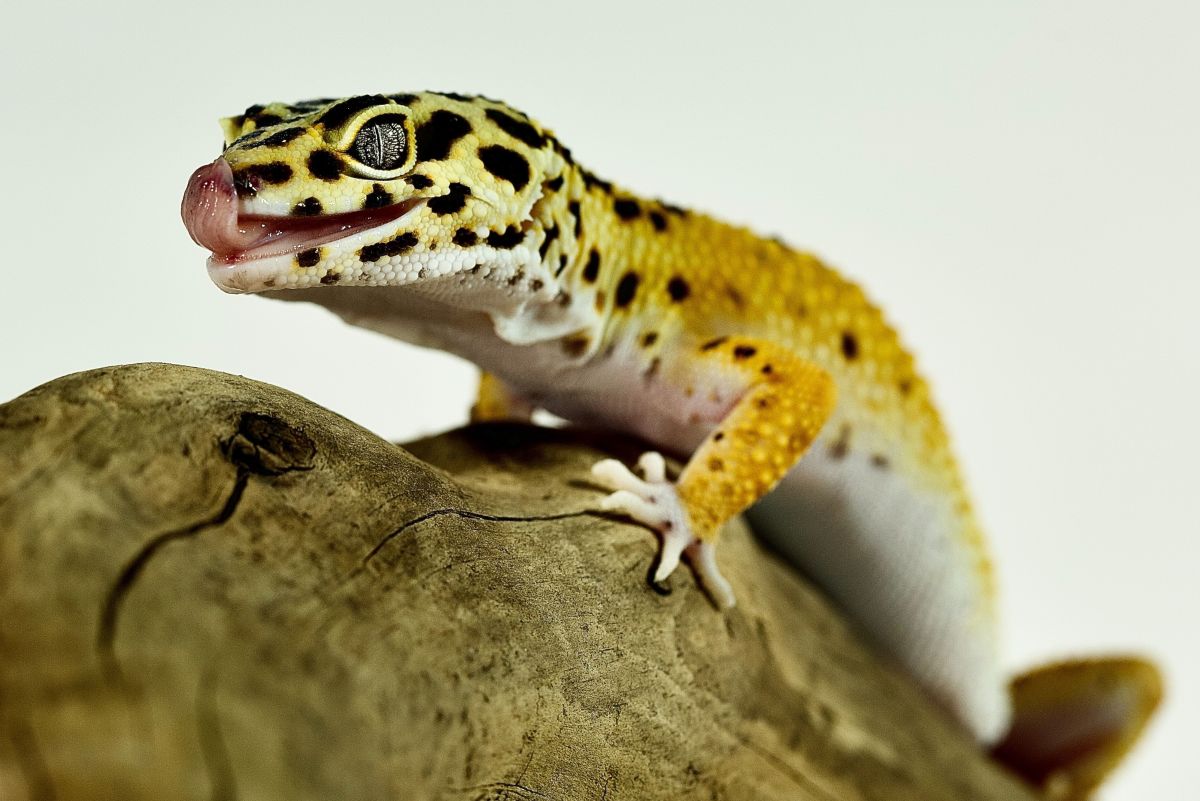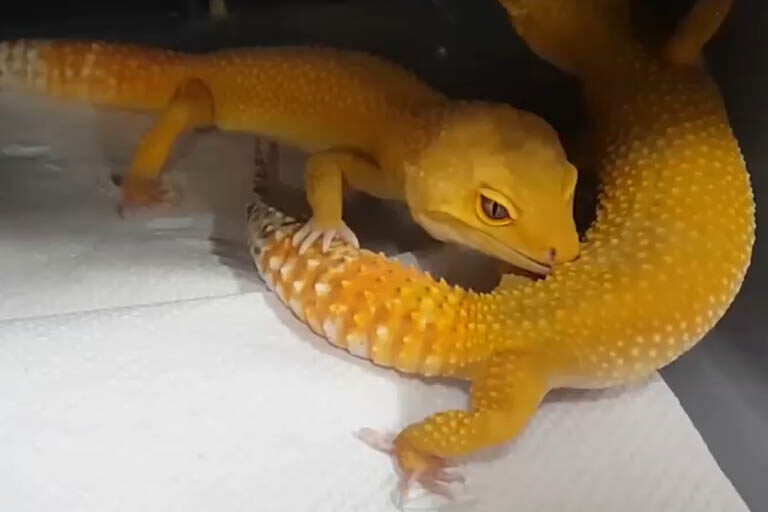Leopard geckos exhibit fascinating and sometimes unusual breeding behaviors, especially when adult males and females are kept together. This behavior typically unfolds at night during the breeding season, where complex interactions reveal much about their natural instincts.
Understanding these behaviors provides insight into their reproductive process and can be essential for responsible breeding practices.
Table of Contents
Introduction to Breeding Behavior in Leopard Geckos
Breeding behavior in leopard geckos is primarily seen in sexually mature adults, typically around 9 to 10 months of age. Leopard geckos follow a seasonal breeding cycle, which usually begins in early spring, extending into autumn.
During these months, males and females are more likely to exhibit mating behaviors when housed together, as environmental factors like temperature and daylight shifts mimic their natural breeding cues.
Interestingly, breeding-like behaviors can also appear between males due to territorial disputes. Recognizing these behaviors helps distinguish between mating and fighting, crucial for maintaining harmony among leopard geckos in shared habitats. The breeding process consists of two main stages: courtship and copulation.
Courtship Behavior and Male Leopard Gecko Actions
In leopard gecko courtship, the male’s actions are particularly notable. Upon spotting a receptive female, the male leopard gecko begins by showing interest and approaching her. He may adopt a stalking stance or circle around her, displaying behaviors meant to signal his intentions.
A distinct characteristic of this phase is the tail movement; the male’s tail may lift, sway from side to side, or even vibrate. This tail vibration, often audible, signals the male’s readiness for courtship.
The male may proceed either slowly or quickly, sometimes displaying jerky movements to capture the female’s attention. This phase of courtship involves careful inspection of the female, where the male evaluates her receptiveness before moving to the next step.
If the male deems the female a suitable mate, he will advance more assertively, sometimes dashing towards her to initiate contact.
The Role of Biting in Courtship
One common yet misunderstood behavior in leopard gecko courtship is biting. Male leopard geckos often bite the female’s body or head as a way of establishing physical contact and asserting dominance.
Although this may appear aggressive, it is a natural part of their mating ritual. The biting generally occurs around the female’s body or head and is a precursor to the mating process.
At this stage, the female has the option to either accept or reject the male’s advances. A receptive female typically remains still, allowing the male to proceed. Conversely, an unreceptive female may attempt to escape or show defensive behavior, including producing vocalizations, such as clicking sounds, to deter the male.
Copulation Process in Leopard Geckos
If the female does not resist, the male will move to position himself for copulation. This involves the male climbing on top of the female, positioning his back leg over her tail, and sliding his tail beneath hers to align their reproductive organs.
This maneuver is precise, allowing successful mating to occur within a matter of seconds.
During copulation, the female may still exhibit resistance, but persistent males often succeed in achieving copulation. Larger, stronger males tend to have an advantage over smaller rivals, often securing more successful copulations due to their physical strength. After mating, the female will usually move away, signaling the end of the interaction.
Female Leopard Gecko’s Response and Post-Copulation Behavior
Following successful copulation, female leopard geckos enter a phase of egg production. Fertile eggs are typically laid 16 to 22 days post-mating, though the possibility of infertile eggs remains, even after successful mating.
Remarkably, female leopard geckos are capable of laying eggs without mating, a phenomenon known as parthenogenesis in reptiles, though these eggs are usually infertile.
A female can engage in multiple mating sessions throughout the breeding season, with some females breeding over five times in a single season. This repeated mating enhances the likelihood of producing viable offspring and contributes to the genetic diversity of the clutch.
Breeding Behavior Beyond Mating: Fighting and Territorial Disputes
Not all leopard gecko breeding behaviors involve male-female interactions. Occasionally, two males in close quarters exhibit similar behaviors due to territorial disputes. Males may display aggression by circling, tail vibrating, and even biting, similar to courtship, but with more pronounced hostility.
Recognizing these signs is vital to prevent unnecessary stress or injury among housed males, especially in a breeding setup.
Leopard Gecko Egg Laying and Incubation
Once a female has mated, egg-laying becomes the primary focus. Each clutch typically contains two eggs, and females can lay multiple clutches during the breeding season. After eggs are laid, the incubation process begins, where environmental conditions like temperature play a critical role in determining the sex and viability of the offspring.
Ideal incubation temperatures for leopard gecko eggs are generally between 82°F and 88°F. Lower temperatures produce more female offspring, while higher temperatures tend to result in males. Maintaining proper humidity levels is also essential, as eggs are sensitive to environmental fluctuations, which can impact hatchling survival rates.
Common Vocalizations and Behaviors During Breeding Season
During courtship, females may vocalize as a defensive mechanism against overly aggressive males. These vocalizations, often in the form of clicking or chirping sounds, are rare outside the breeding season, making them unique to these interactions.
Vocalizations serve as a deterrent, signaling discomfort or reluctance to engage in mating.
Gecko owners often notice that breeding behaviors appear suddenly and unexpectedly, especially in housing setups where males and females are kept together. Understanding these behaviors helps in providing a supportive environment that respects the natural tendencies of these fascinating reptiles.
Final Thoughts on Leopard Gecko Breeding
Breeding leopard geckos requires careful observation, understanding of their natural behaviors, and a commitment to ethical breeding practices. From courtship rituals to copulation and egg-laying, each phase of the breeding cycle offers insights into the species’ remarkable adaptability.
Proper care, adequate space, and attention to environmental factors are essential to ensure the health and well-being of both male and female geckos throughout the breeding season.
The process may appear complex, but with patience and responsible breeding practices, leopard gecko enthusiasts can witness the full spectrum of these unique reptiles’ breeding behaviors.






